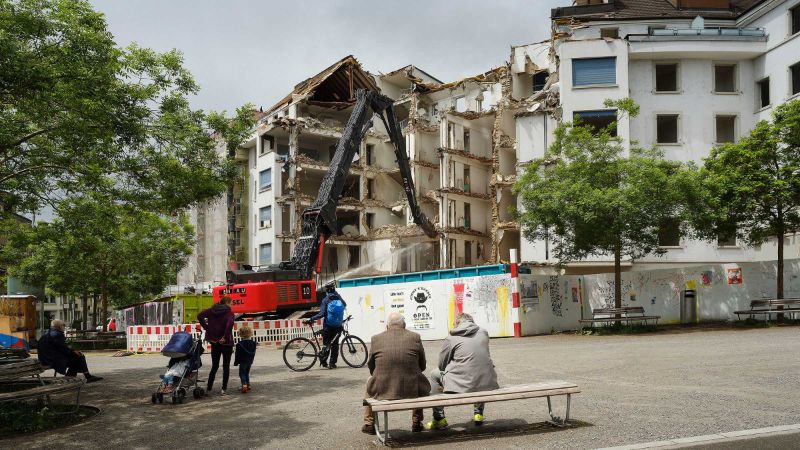New housing developments displace vulnerable persons
Build, build, build is the dominant strategy to address the current housing shortage. In the Zürich context, developing new housing means densification, whereby new buildings are constructed within already existing settlements rather than on greenfields.
Densification is necessary because we need new housing. It also protects undeveloped land. In addition, it helps to lower per capita CO2 emissions because it can reduce mobility stemming from urban sprawl.
Wanted densification with unwanted effects
When seeing the analyzed data, I was struck by how clearly the analysis shows that new housing developments pushing people out of their homes and out of the city. We analysed several linked public registry datasets on buildings and on households with a focus on the canton of Zurich.1, 2 Shockingly, the adverse effects of today’s profit-oriented housing developments turned out to be more intense and more unfair than we and many other experts had thought.
Densification in the Zürich region means mainly to replace existing buildings. In the canton of Zurich, seven times more buildings are being demolished and rebuilt than renovated or extended. Our analyses show that these new constructions displaces vulnerable groups from city centres. By analysing all building demolitions and renovations of apartment blocks in the canton of Zurich in the years 2014–2019, we were able to show that around 13’000 people were displaced and these displaced people had a median monthly household income that was 4,800 Swiss francs below the median income in the canton of Zürich.
We know now who is mainly affected by housing development
In concrete terms, this means that the poorer population, non-citizens and and single parents have a higher likelihood of being displaced. People with an African citizenship and asylum seekers with a temporary protection status are three times more likely to be displaced, and single parents twice as likely. Is this what we want from housing development?
However, it’s not just that new constructions lead to social displacement, but renovations displace too. Those living in newly renovated apartments have a monthly median household income 3,623 Swiss francs higher than the people who lived there before. Moreover, displaced peoplepredominantly move to Zürich North (the districts of Oerlikon, Schwamendingen) or to agglomeration municipalities , such as Regensdorf, Bülach, Schlieren, Dietikon or Adliswil.
Such involuntary displacement to different and distant parts of the Zürich region interrupt people’s lives profoundly. We all rely on our local relationships, and many of us also rely on place-based support services such as day care, schools, home care. People in socioeconomically difficult circumstances are particularly vulnerable, especially since they often have to build completely new support networks.
What these facts and figures mean
These findings give us for the first time concrete and large-scale data about displacements effects and gentrification processes in the Zürich region.
I don’t believe that these data means that we should not pursue densification or its underlying goals. But densification, as it is currently implemented, should be accompanied by social and environmental regulations. We need accompanying policy measures for densification: vulnerable groups need to be better supported and protected by tenancy law. We should examine the multiple purposes of the old housing stock in-depth before demolishing it. Renovations could be implemented in stages so that it’s possible for residents to return to their homes. In addition, cities and communes should also be more active in directly pursuing affordable housing, for example by acquiring land and prioritising not-for-profit housing. In my view, this would help anchoring affordable housing in central locations. It’s up to policymakers and planners to act.
